Gathering at Gang Gang
Close to 30 landholders with conservation agreements, plus a sprinkling of other guests, braved some recent rainy weather to visit ‘Gang Gang’, a property near Gundaroo in NSW, to see the results of 17 years of landscape restoration.
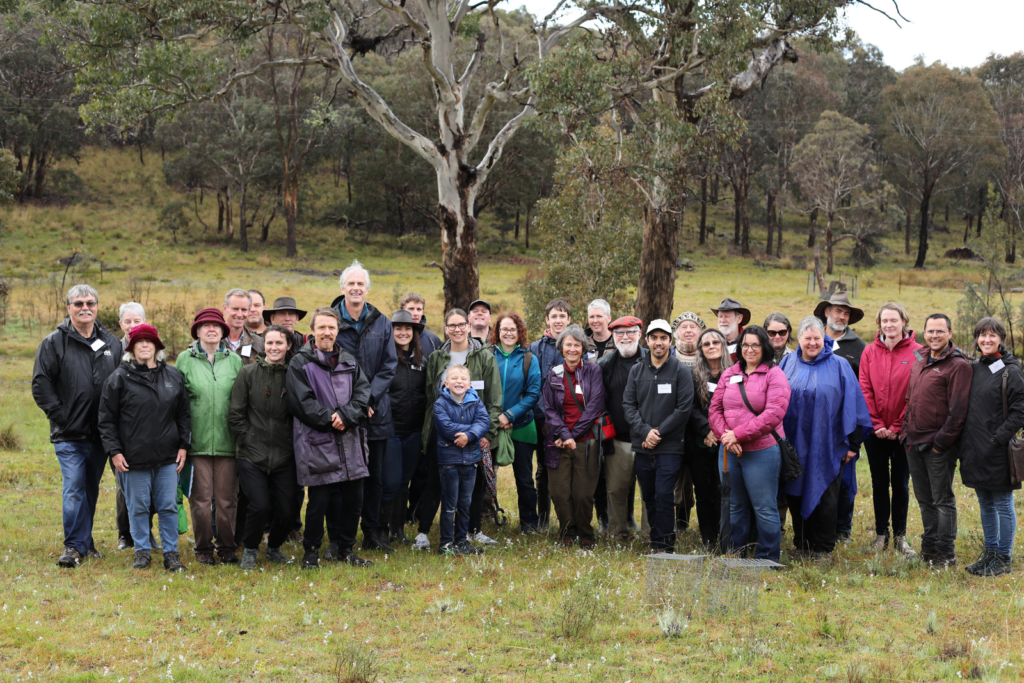
Owners Sue McIntyre and Jon Lewis showed visitors around Gang Gang’s 50 hectares of woodland, grassland and forest they have been actively managing for biodiversity conservation since 2005. Sue and Jon shared information on a range of topics including using fire for ecological purposes, creating fenced exclosures to manage native herbivore grazing, and eucalypt thinning. The visitors left with inspiration for managing and enhancing their own conservation agreement areas.
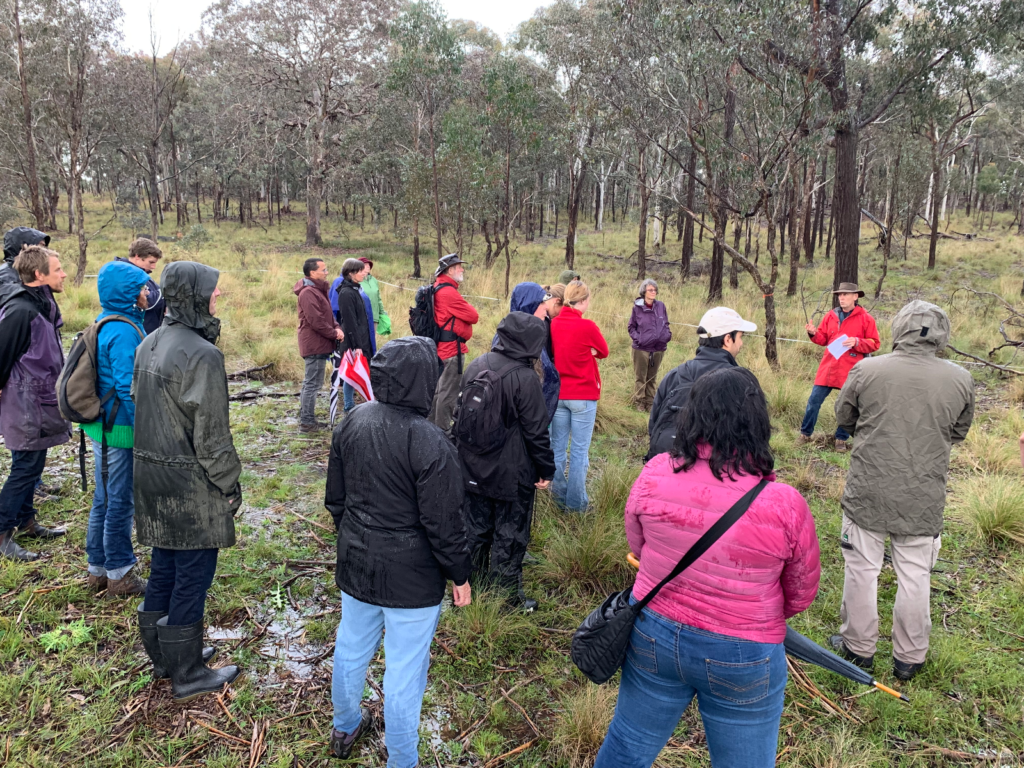
At Gang Gang, Sue, who is a botanist and ecologist, has increasingly shifted her attention from the world of academia to restoring Gang Gang’s natural environment.
Applying the observational skills she has honed as a scientist, Sue sets clear objectives for the land, manages environmental threats such as undertaking weed management, and monitors outcomes closely. Sue freely shares what she learns on the Gang Gang website ensuring that others can learn from her decades of experience.
“Our 15 years of daily contact with this land, and the intensive manual work to restore it, has given me a level of satisfaction and ecological insight that even exceeds my very rewarding 20-odd years as an ecological researcher,” Sue said.
“The establishment of a conservation covenant in collaboration with the NSW Biodiversity Conservation Trust has raised the likelihood of the property being passed on to future sympathetic managers, and we have confidence that our efforts will not be wasted.
“Our patch of critically endangered grassy woodland is one tiny sample of a once vast ecological community, but it supports viable populations of grassland species that are rapidly disappearing elsewhere.”
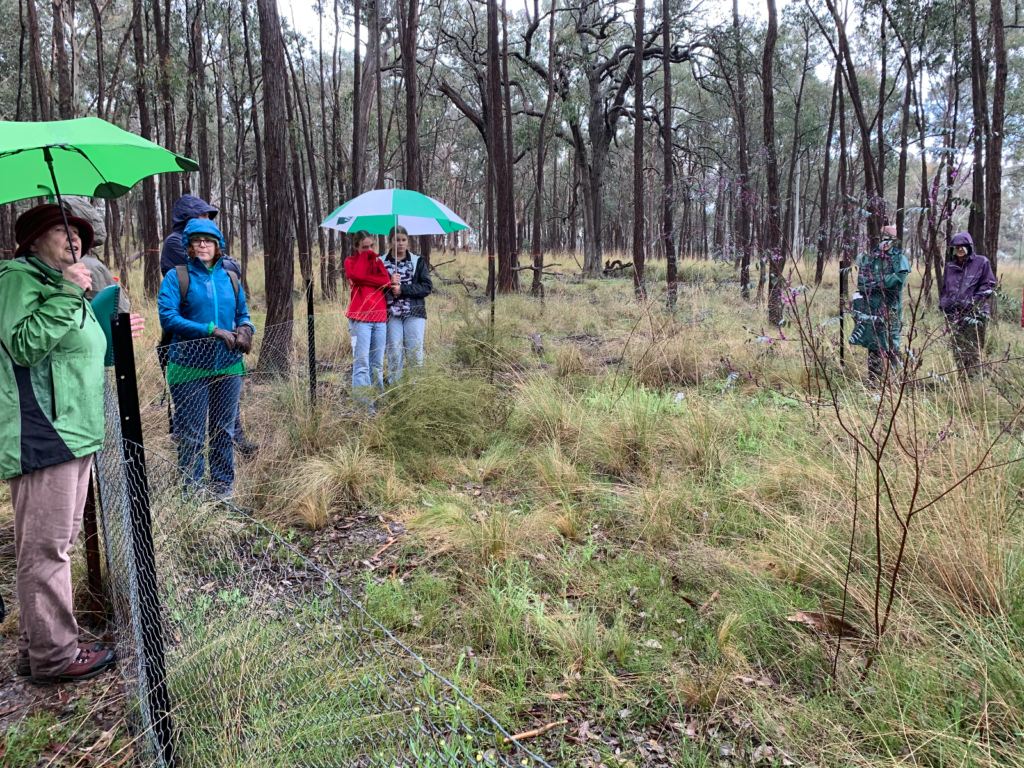
We asked Sue about the significance of private land conservation in tackling the challenges highlighted in the recent State of Environment Report.
“There are many creative conservation actions that private landholders can achieve with little cost, which are difficult for managers of public reserves to achieve. Examples include timely, small-scale burning that is responsive to local conditions, as well as prompt responses to weed incursions. Use of temporary exclosures to protect grazing-sensitive wildflowers is another rewarding form of small-scale management that private landholders can easily do.”
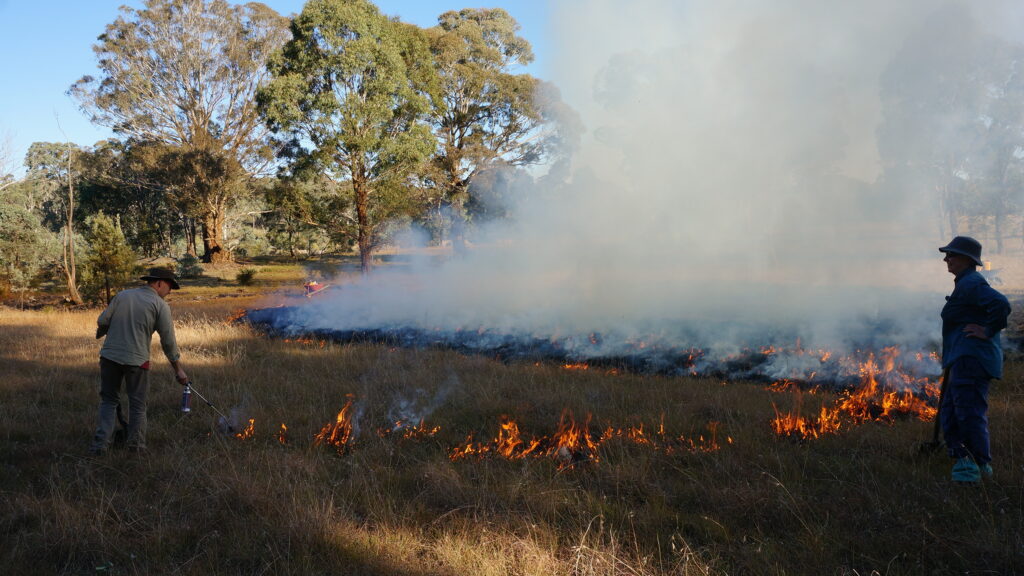
Sue described the importance of perennial grass cover in controlling erosion during heavy rain events, such as were experienced on the day of the event.
“On the part of the catchment that we manage, there was no erosion caused by the heavy rains that broke the incredibly severe drought of 2017-19, and the water coming off it ran beautifully clear.”
After the property tour, attendees carpooled back to Gundaroo to get dry again and shared stories over dinner. The evening wrapped up with a presentation by ACT Government Senior Ecologist, Laura Rayner, on the plight of the nationally vulnerable Superb Parrots.
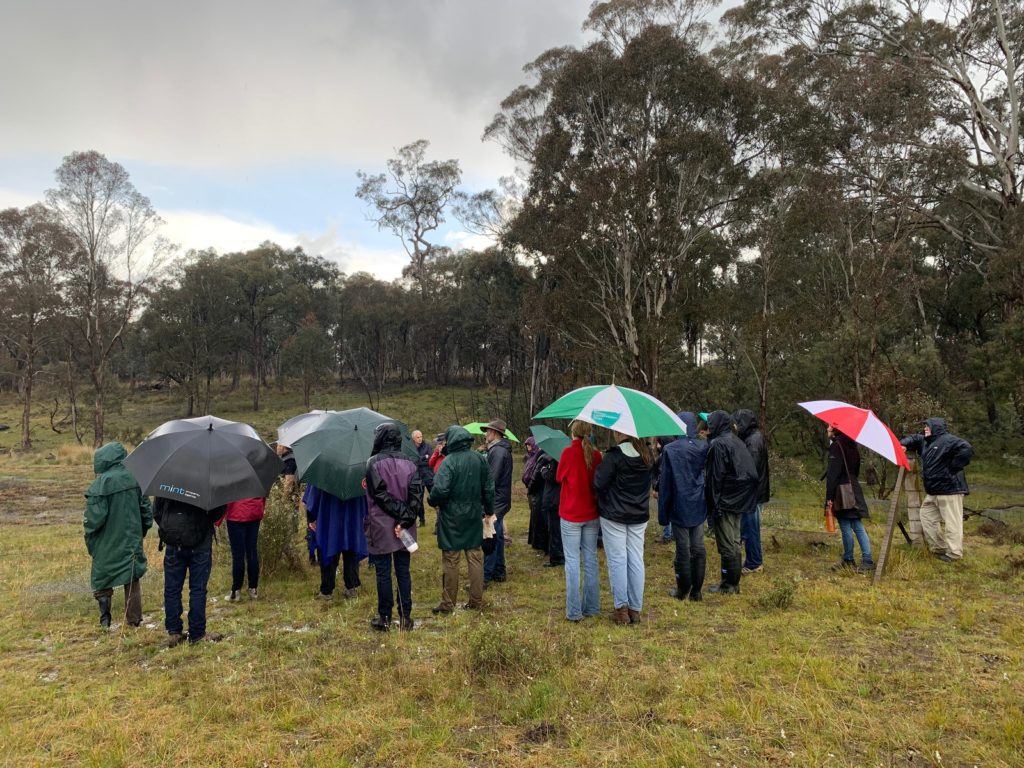
Read more stories of landholders actively managing land for nature.
